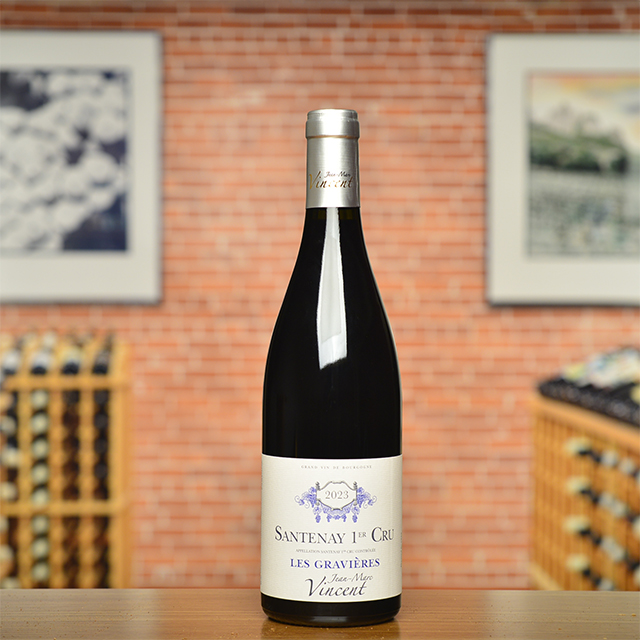Notify me
Petit Royal
Lambert de Seyssel
Click here to view the current bottling of the Petit Royal!
The village of Seyssel, in the French Alps, has a history of viticulture dating back centuries, having built a reputation for floral-scented charmers from the local grapes, Molette and Altesse. Produced in the méthode traditionnelle and aged for two years sur latte, the Petit Royal is unequaled in the world of sparkling wine: alpine flowers, dried fruit, wildflower honey, and a toasty, yeasty note give this value sparkler an utterly delightful aromatic richness and complexity. Serve it with various salty toasts to kick off your next dinner party, or pop one open to liven up a night at home with a big bowl of mac and cheese. –Anthony Lynch
| Wine Type: | sparkling |
| Bottle Size: | 750mL |
| Blend: | 70% Molette, 30% Altesse |
| Appellation: | Seyssel |
| Country: | France |
| Region: | Savoie |
| Producer: | Lambert de Seyssel |
| Winemaker: | Gérard Lambert, Olivier Varichon |
| Vineyard: | 10-25 years |
| Soil: | Clay, Limestone |
| Aging: | A liqueur de tirage is added to launch the second (sparkling) fermentation and the bottles are stocked sur latte for two years |
| Farming: | Lutte Raisonnée |
| Alcohol: | 12% |
More from this Producer or Region

2019 Royal Seyssel
France | Savoie, Bugey, Hautes-Alpes
This bottle of Royal Seyssel had me Royally fooled into thinking I was enjoying a very pricey, very prestigious, vintage Champagne.
 /
/
About The Producer
Lambert de Seyssel
The “Royal Seyssel” label, launched in 1901 by the Varichon and Clerc families, was considered the best sparkling Seyssel on the market. But when the operation was purchased in the 1990s by a Burgundian négociant, quality suffered, and in 2007 the owners closed the winery. Dismayed to see what their great local wine had come to, Gérard and Catherine Lambert teamed up with Olivier Varichon to buy back the Royal Seyssel label and recreate the wine that was once so renowned. The wines of Seyssel indulge in the same traditional methods used for Champagne, and take it a step further by aging for at least three years before disgorgement.
More from Savoie or France
2024 Cheverny
Domaine du Salvard France | Loire
2024 Muscadet Sèvre et Maine Sur Lie
Domaine Michel Brégeon France | Loire
2021 Patrimonio Rouge “Carco”
Antoine-Marie Arena France | Corsica
2023 Santenay 1er Cru Blanc “Le Beaurepaire”
Jean-Marc Vincent France | Burgundy
Vouvray Brut “La Dilettante”
Catherine & Pierre Breton France | Loire
2022 Santenay Rouge 1er Cru “Passetemps”
Domaine de Villaine France | Burgundy
2020 Vin de France Rouge “Sempre Azezzu”
Domaine Giacometti France | Corsica
2020 Côtes du Jura Savagnin “Cuvée du Professeur—Sous-Roche”
François Rousset-Martin France | Jura
2021 Chinon “Clos de la Dioterie”
Charles Joguet France | Loire
2019 Saumur Blanc “Le Clos du Moulin”
Thierry Germain France | Loire
2023 Pinot Blanc
Kuentz-Bas France | Alsace
2023 Marsannay Rouge “Les Longeroies”
René Bouvier France | Burgundy
2024 Cheverny
Domaine du Salvard France | Loire
2024 Muscadet Sèvre et Maine Sur Lie
Domaine Michel Brégeon France | Loire
2021 Patrimonio Rouge “Carco”
Antoine-Marie Arena France | Corsica
2023 Santenay 1er Cru Blanc “Le Beaurepaire”
Jean-Marc Vincent France | Burgundy
Vouvray Brut “La Dilettante”
Catherine & Pierre Breton France | Loire
2022 Santenay Rouge 1er Cru “Passetemps”
Domaine de Villaine France | Burgundy
2020 Vin de France Rouge “Sempre Azezzu”
Domaine Giacometti France | Corsica
2020 Côtes du Jura Savagnin “Cuvée du Professeur—Sous-Roche”
François Rousset-Martin France | Jura
2021 Chinon “Clos de la Dioterie”
Charles Joguet France | Loire
2019 Saumur Blanc “Le Clos du Moulin”
Thierry Germain France | Loire
2023 Pinot Blanc
Kuentz-Bas France | Alsace
2023 Marsannay Rouge “Les Longeroies”
René Bouvier France | Burgundy
Kermit once said...

Kermit once said...
For the wines that I buy I insist that the winemaker leave them whole, intact. I go into the cellars now and select specific barrels or cuvées, and I request that they be bottled without stripping them with filters or other devices. This means that many of our wines will arrive with a smudge of sediment and will throw a more important deposit as time goes by, It also means the wine will taste better.














